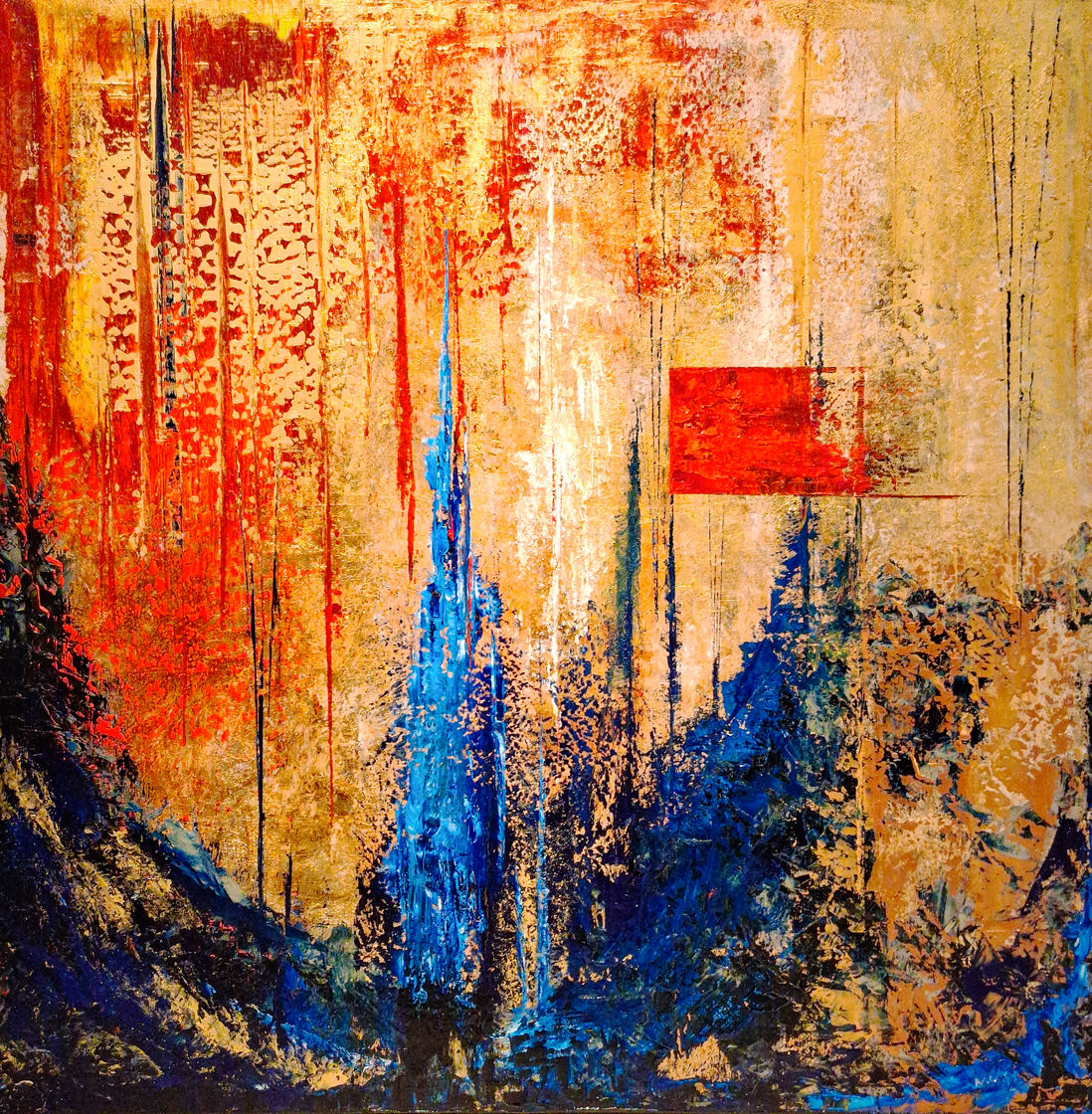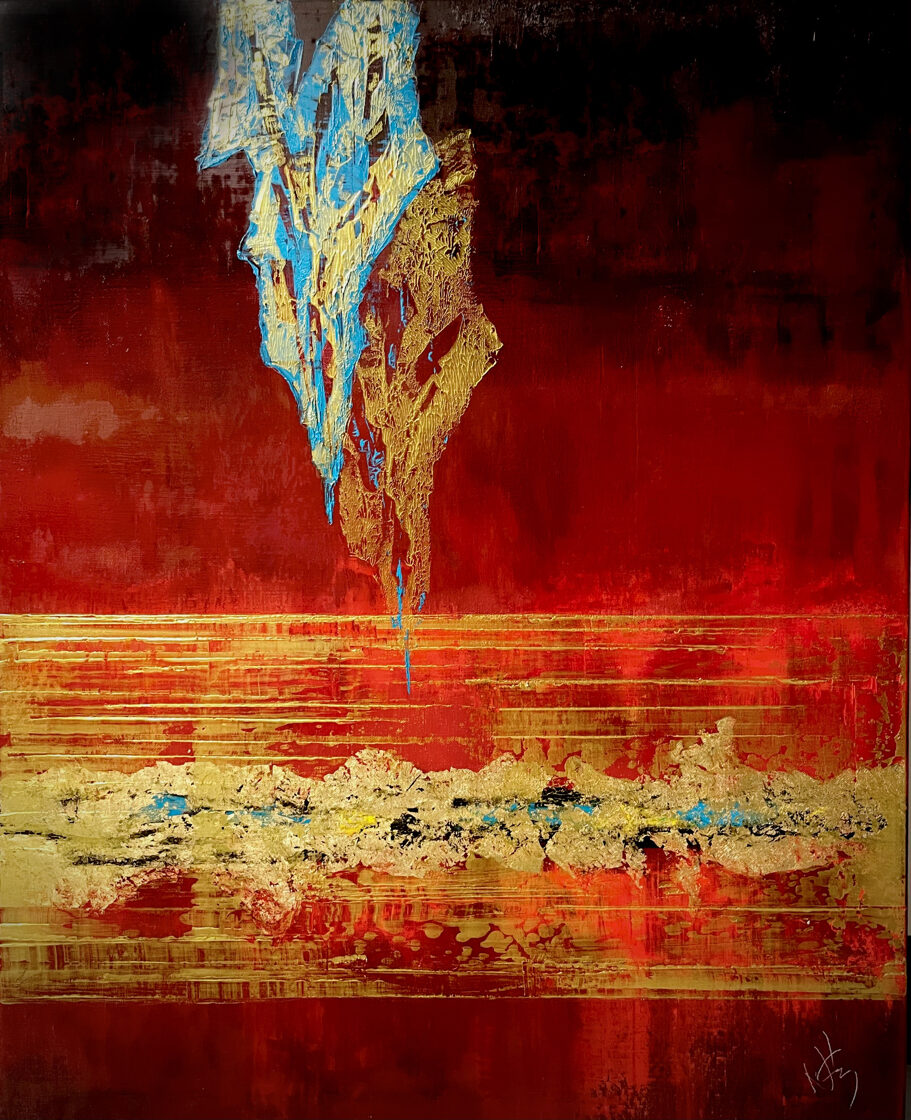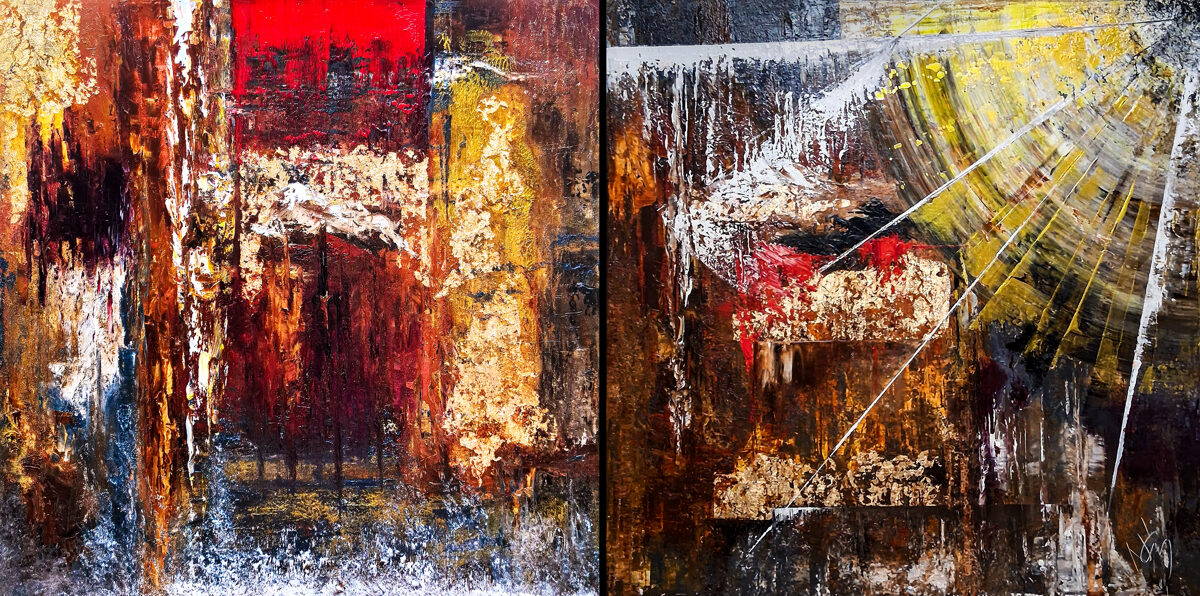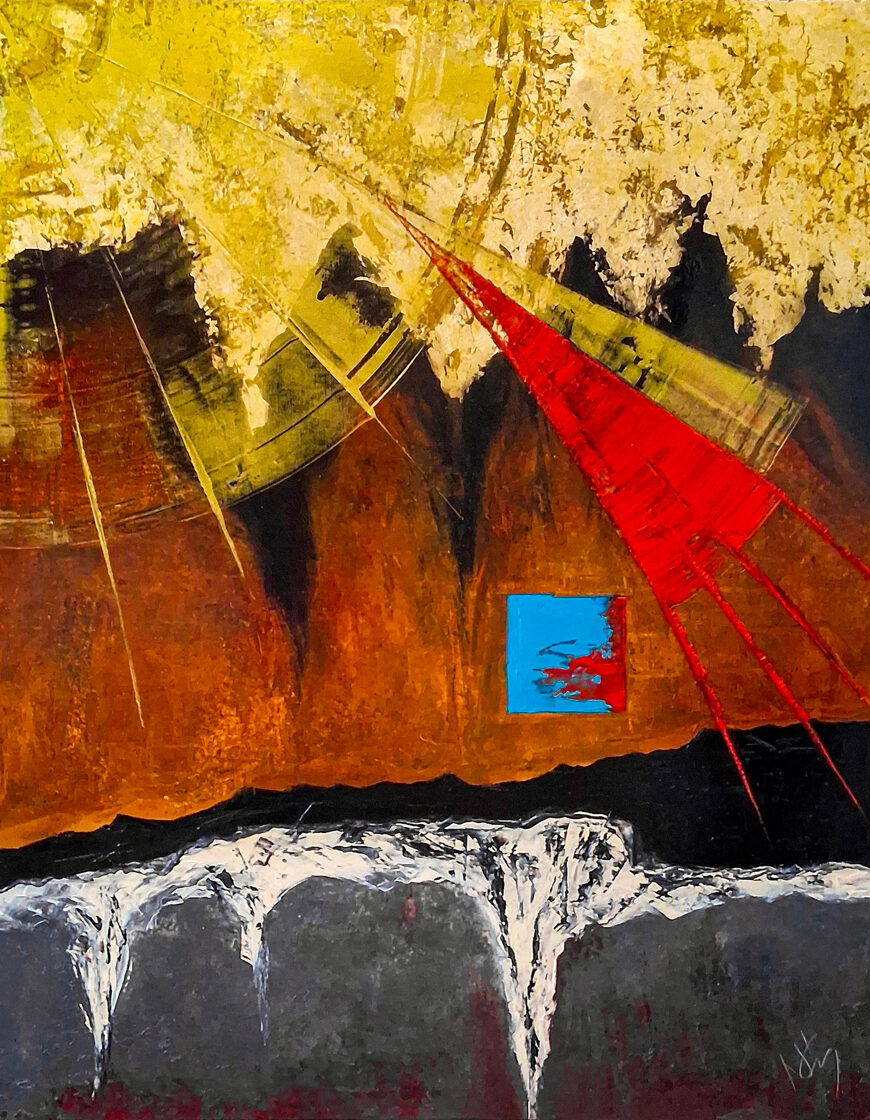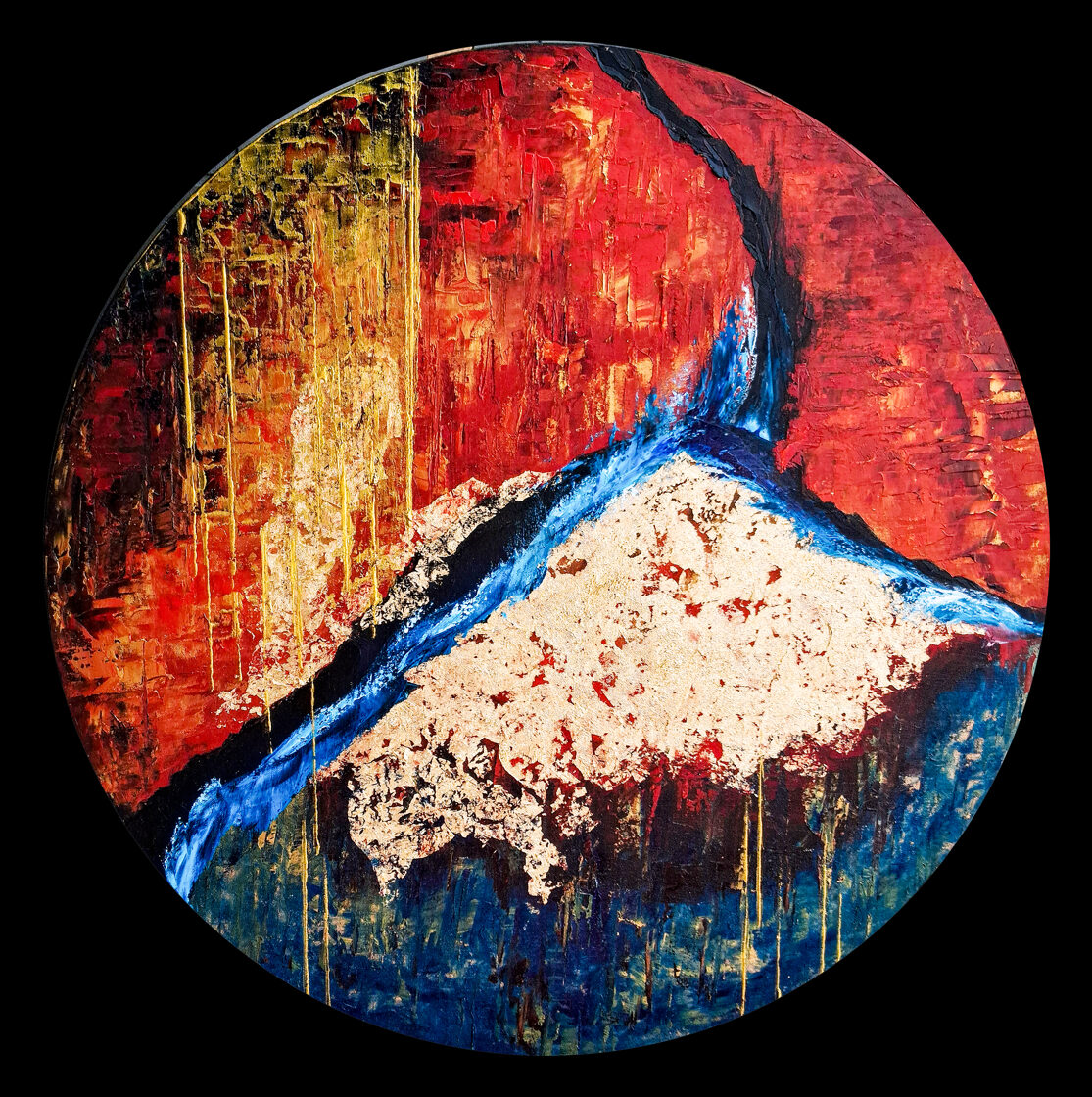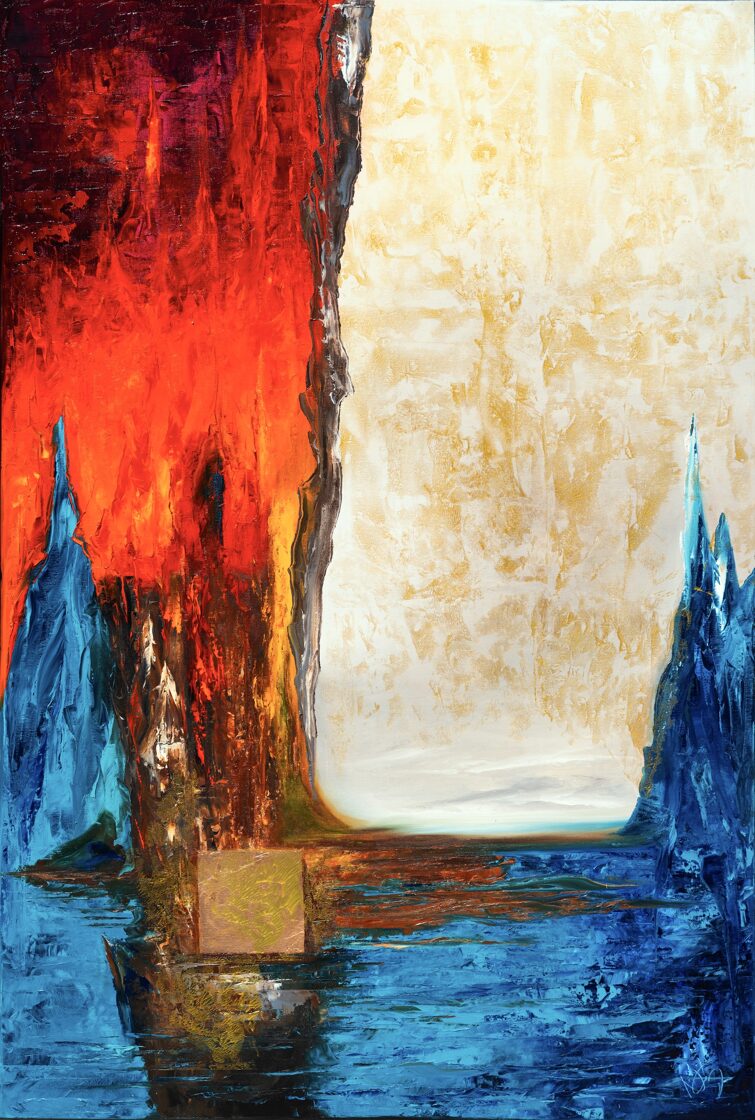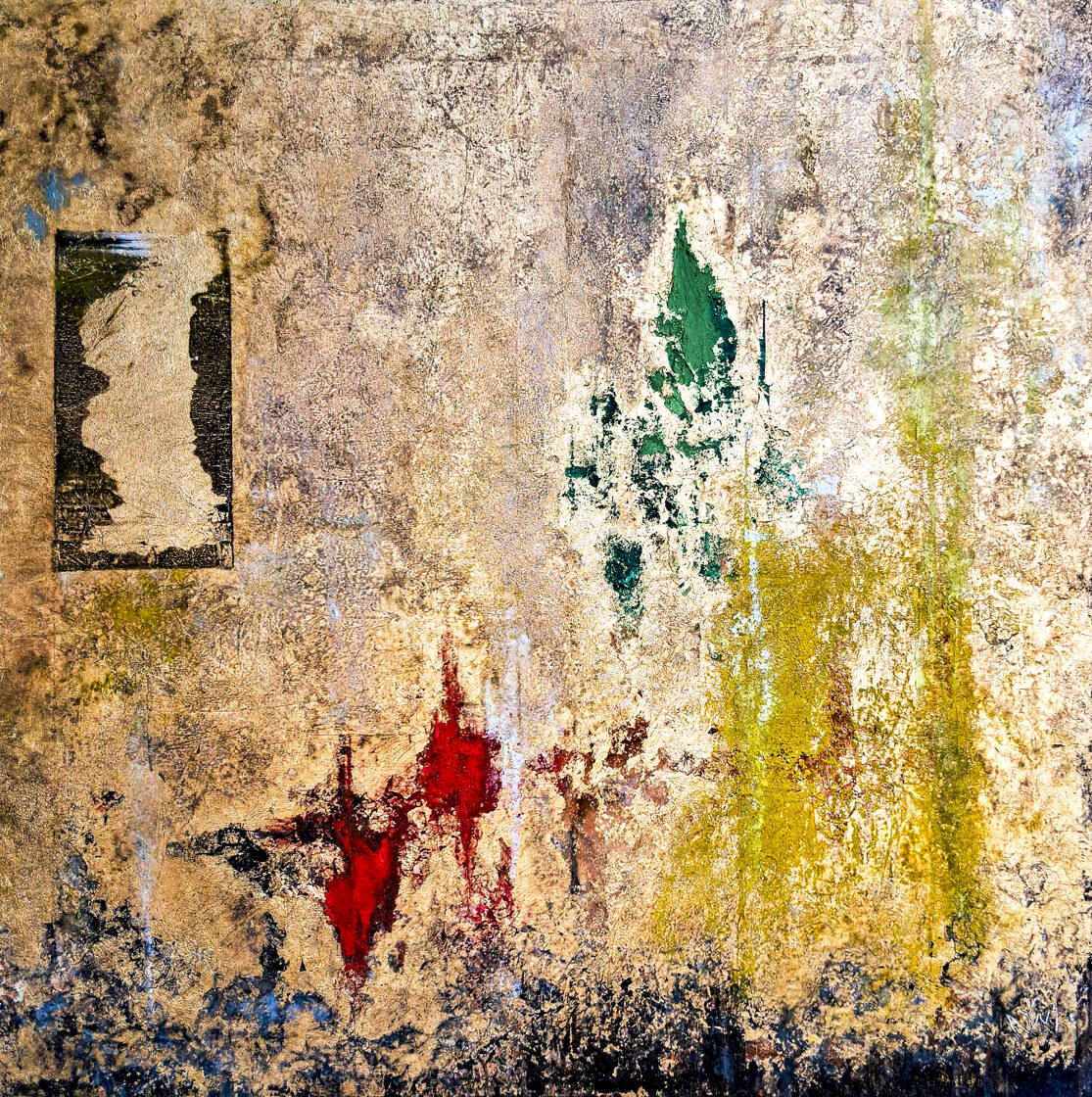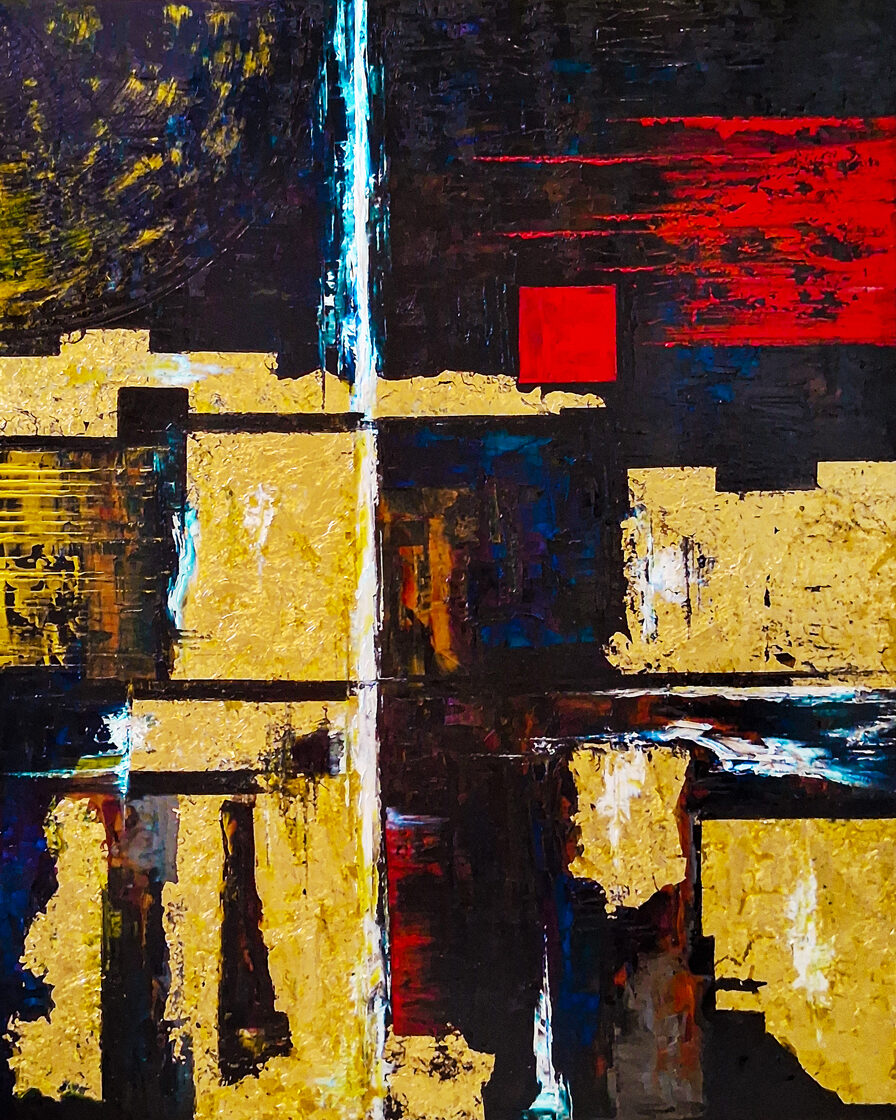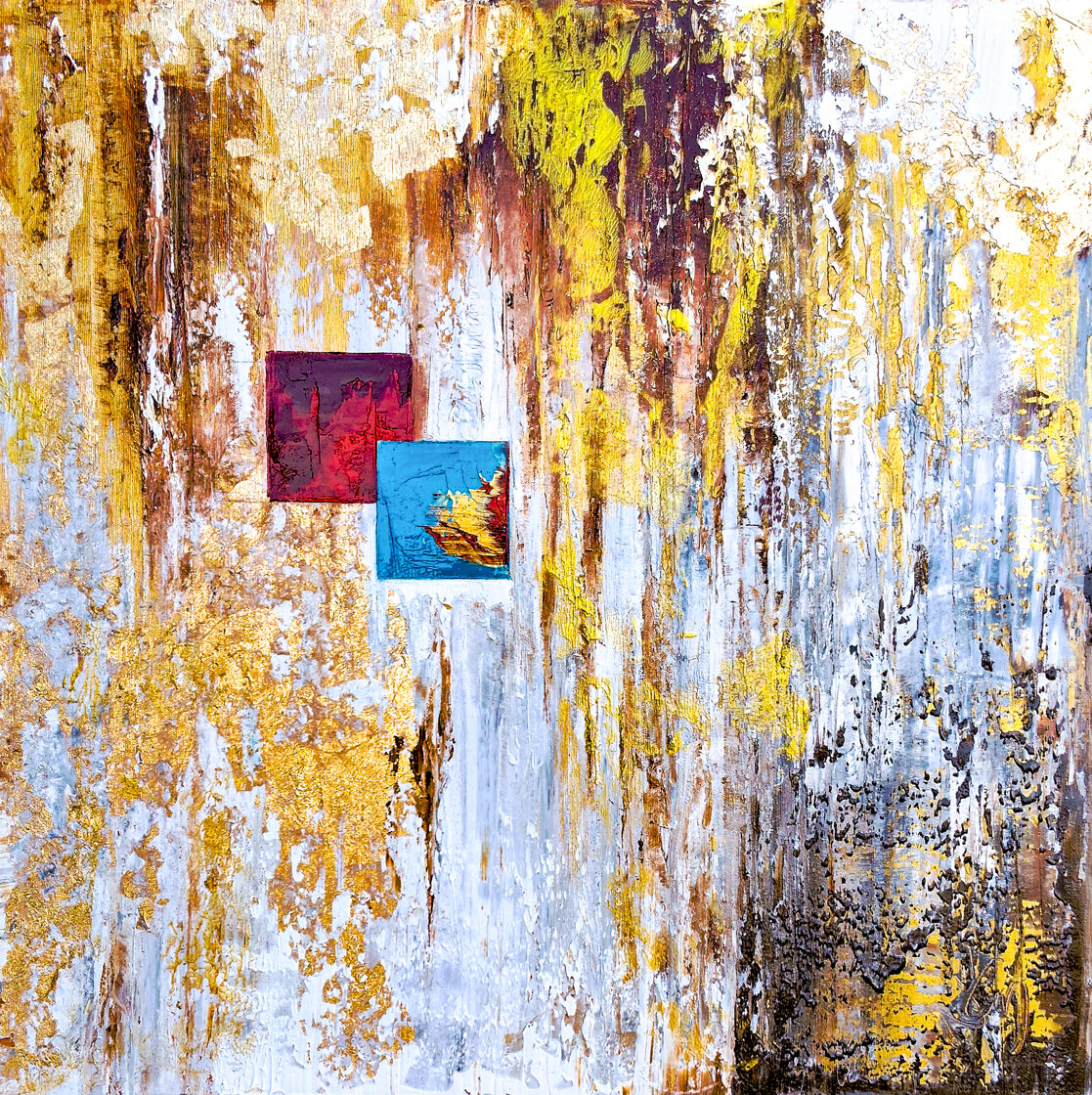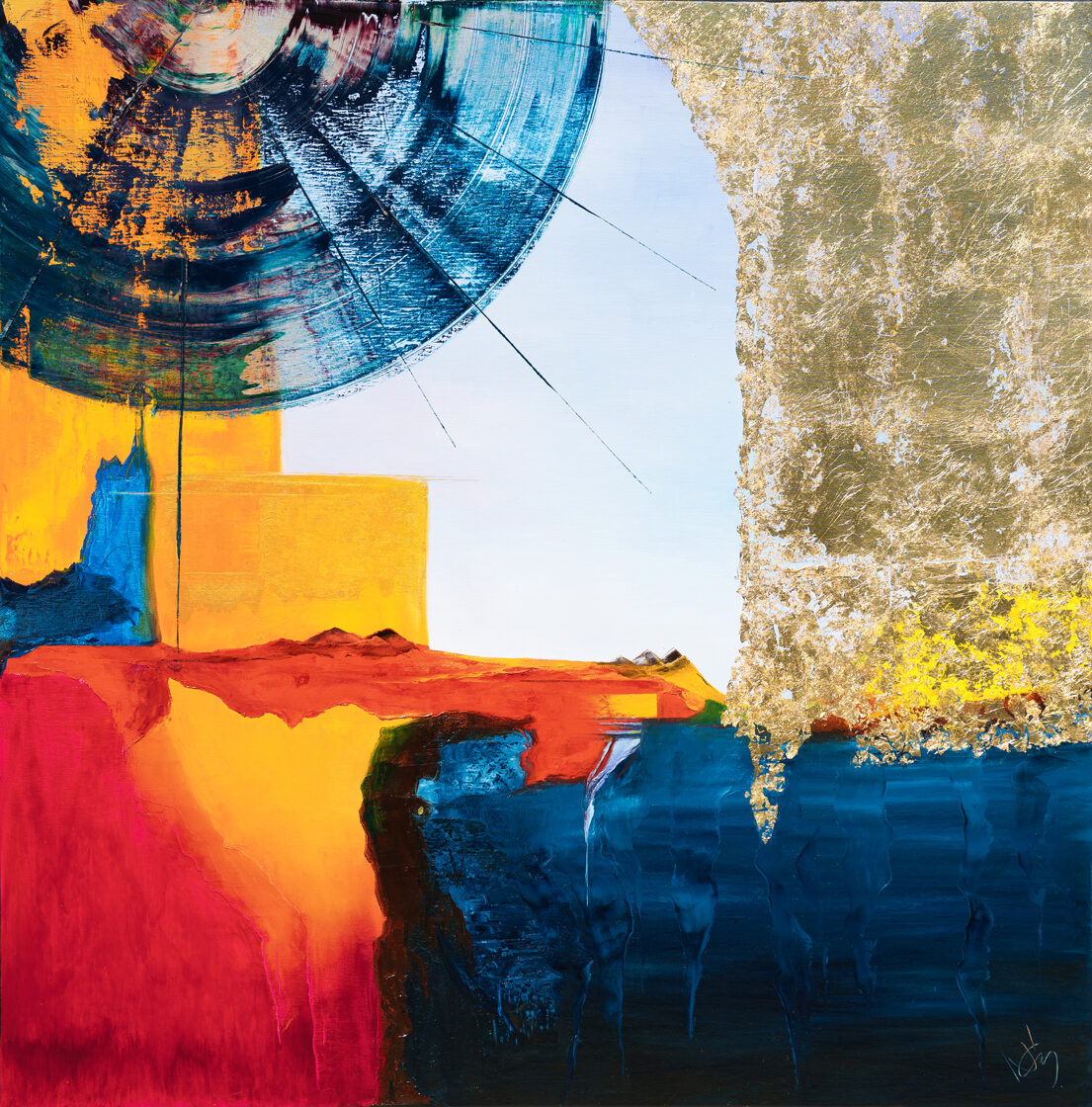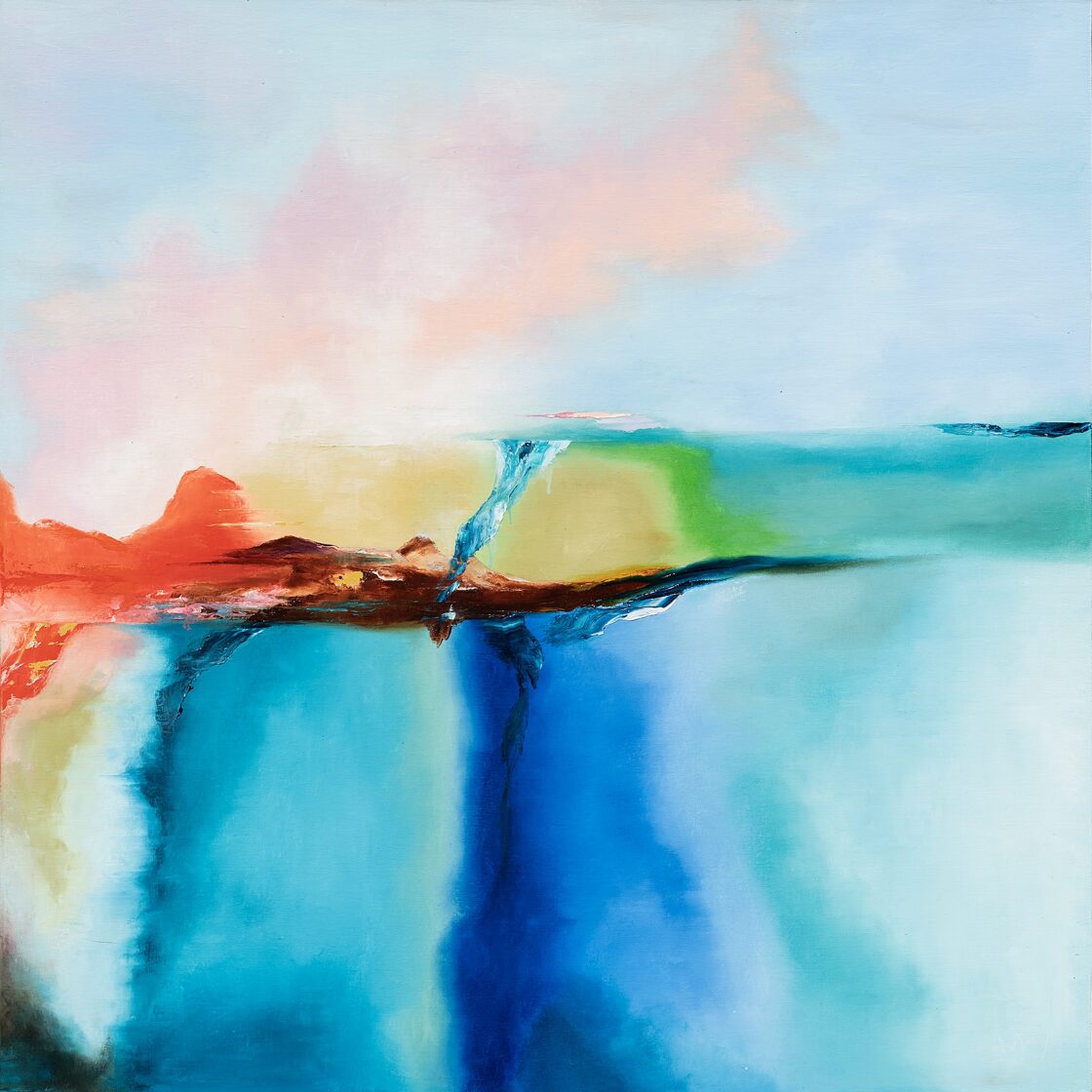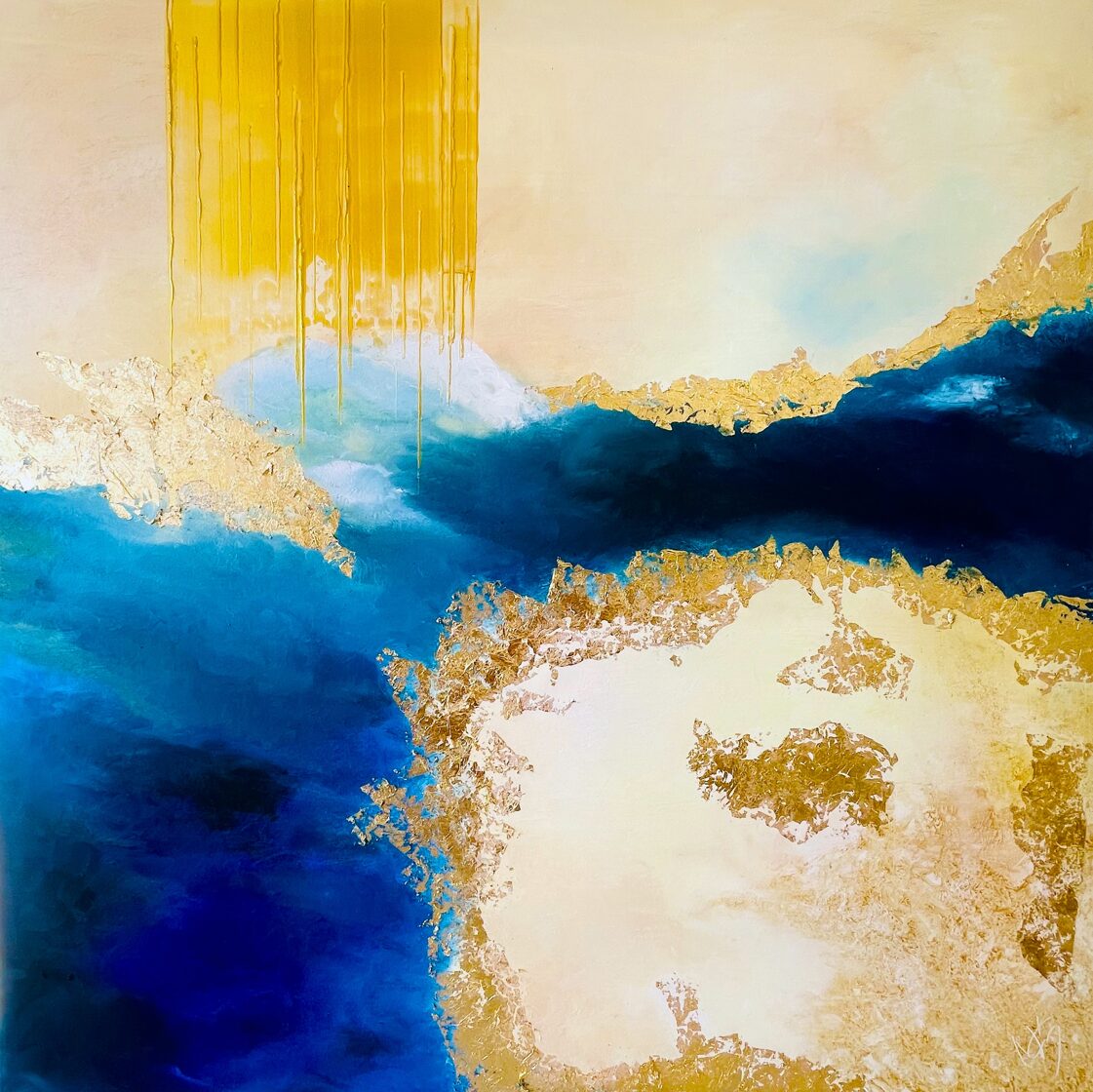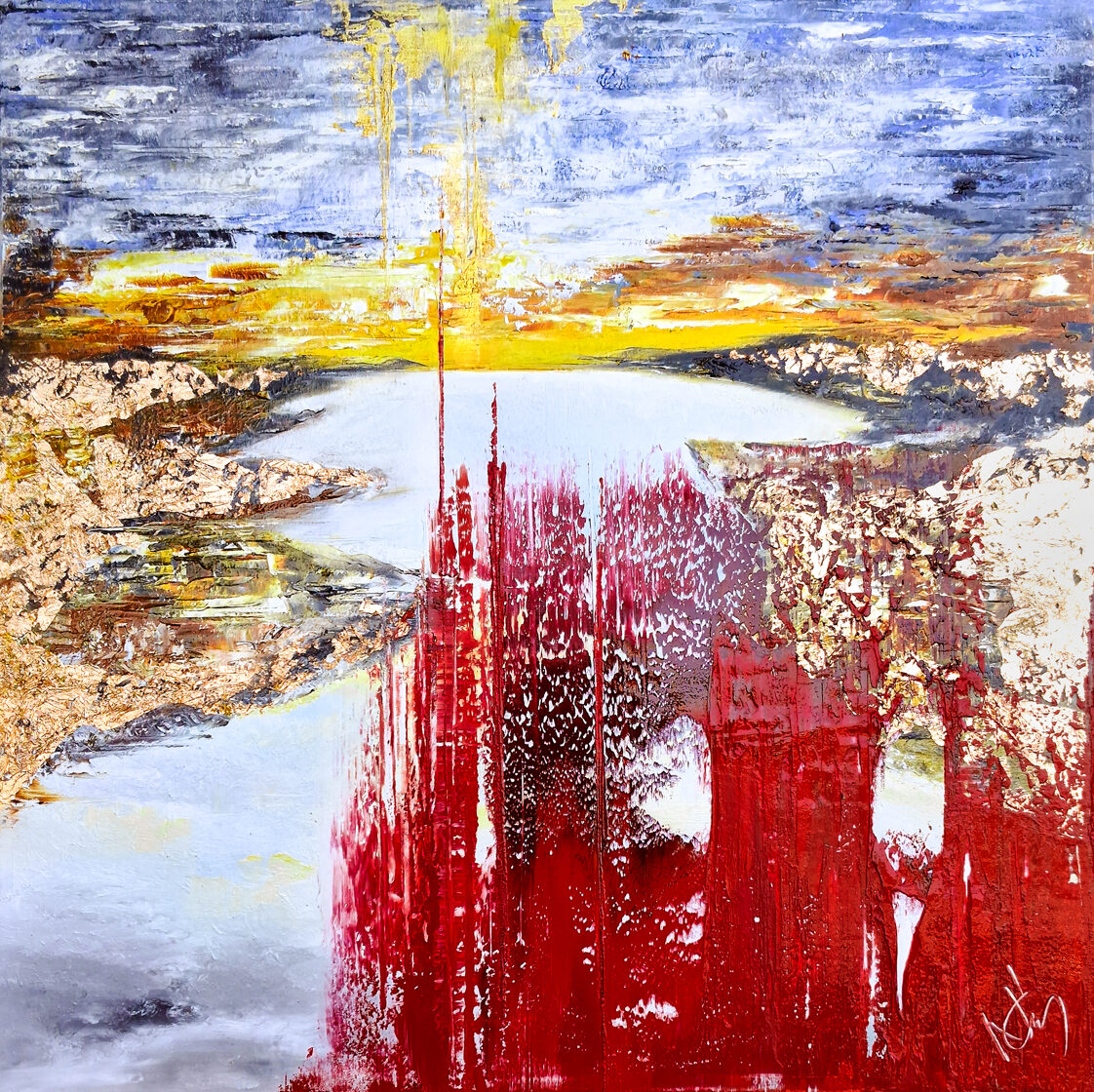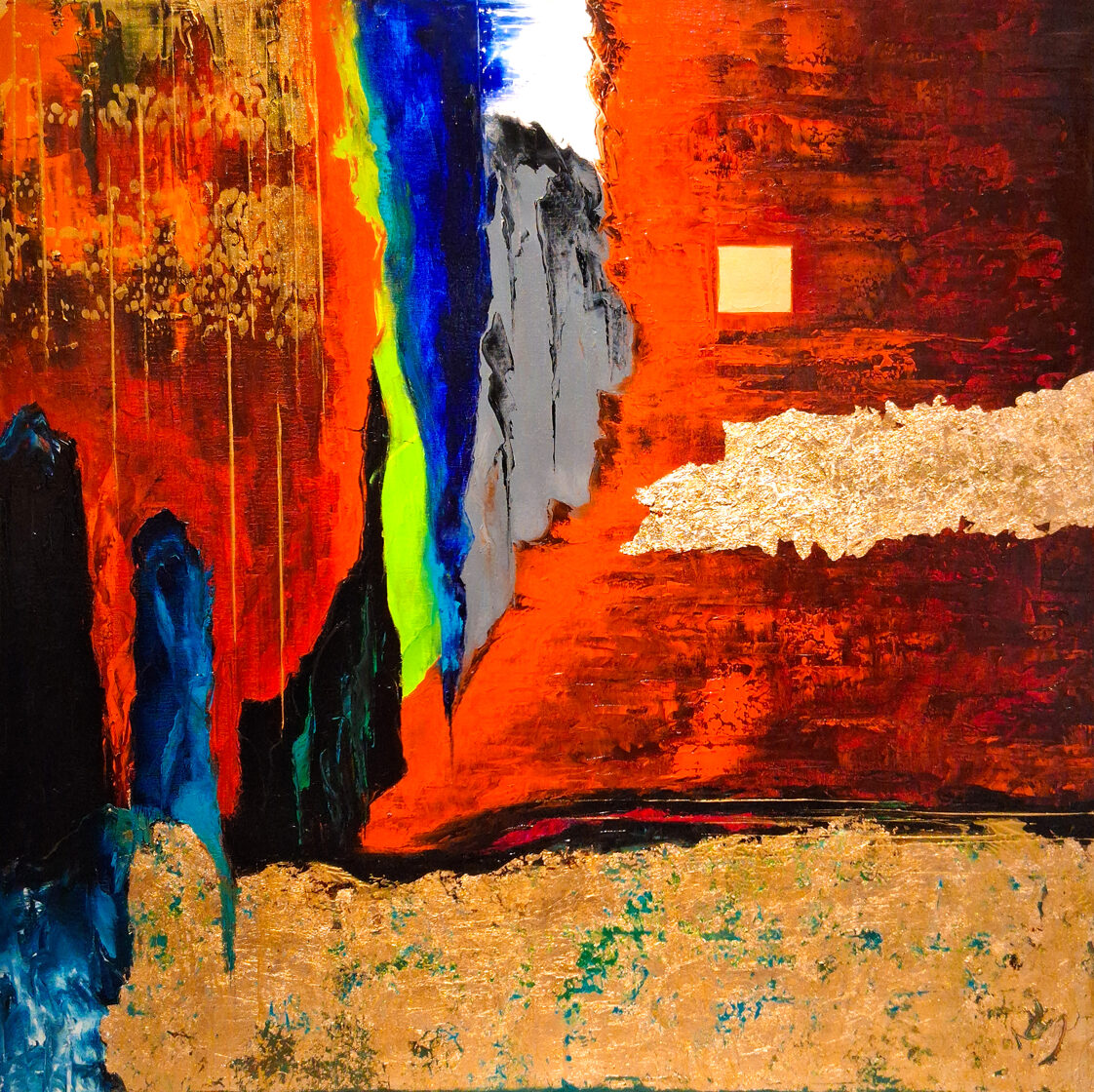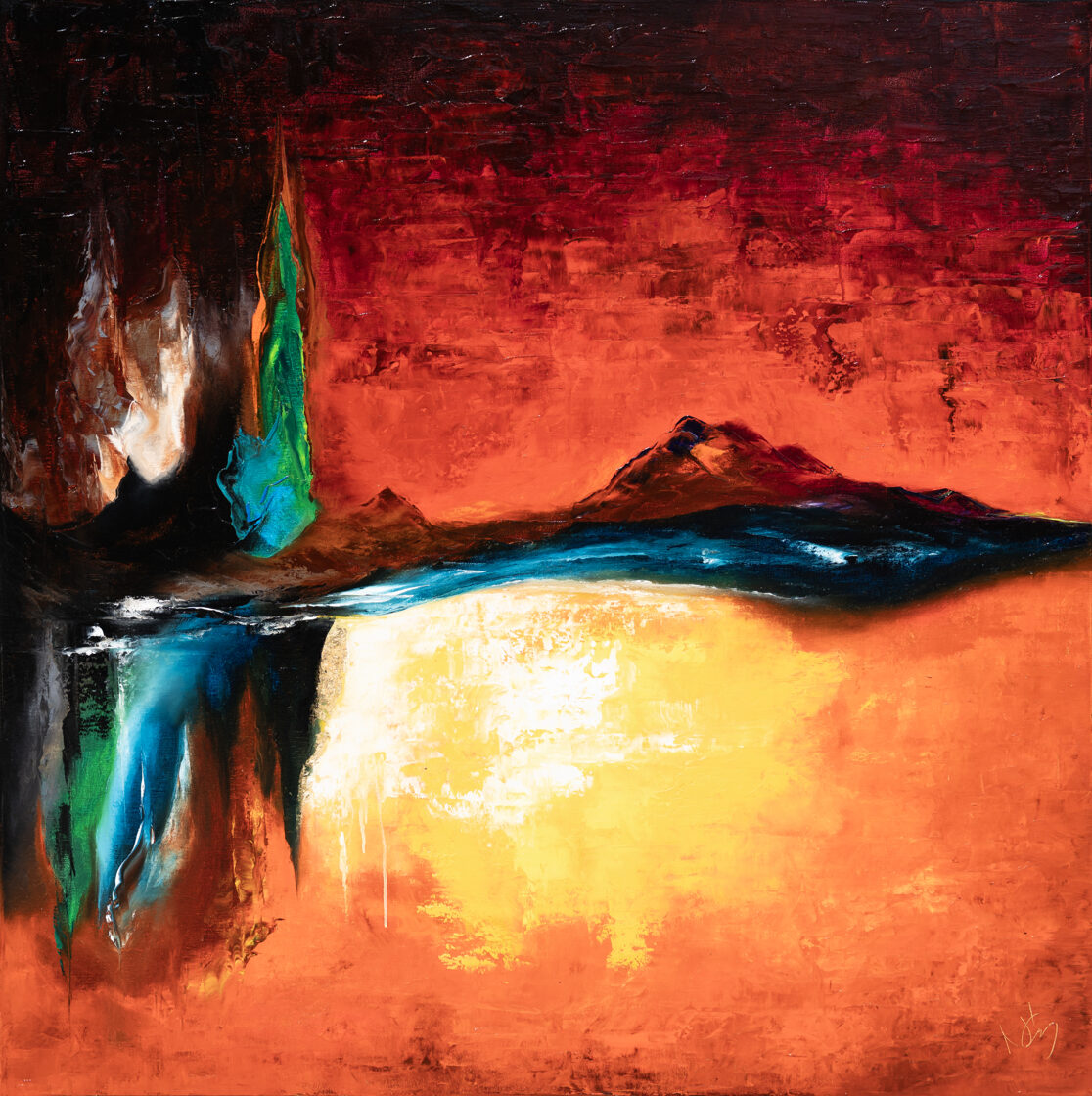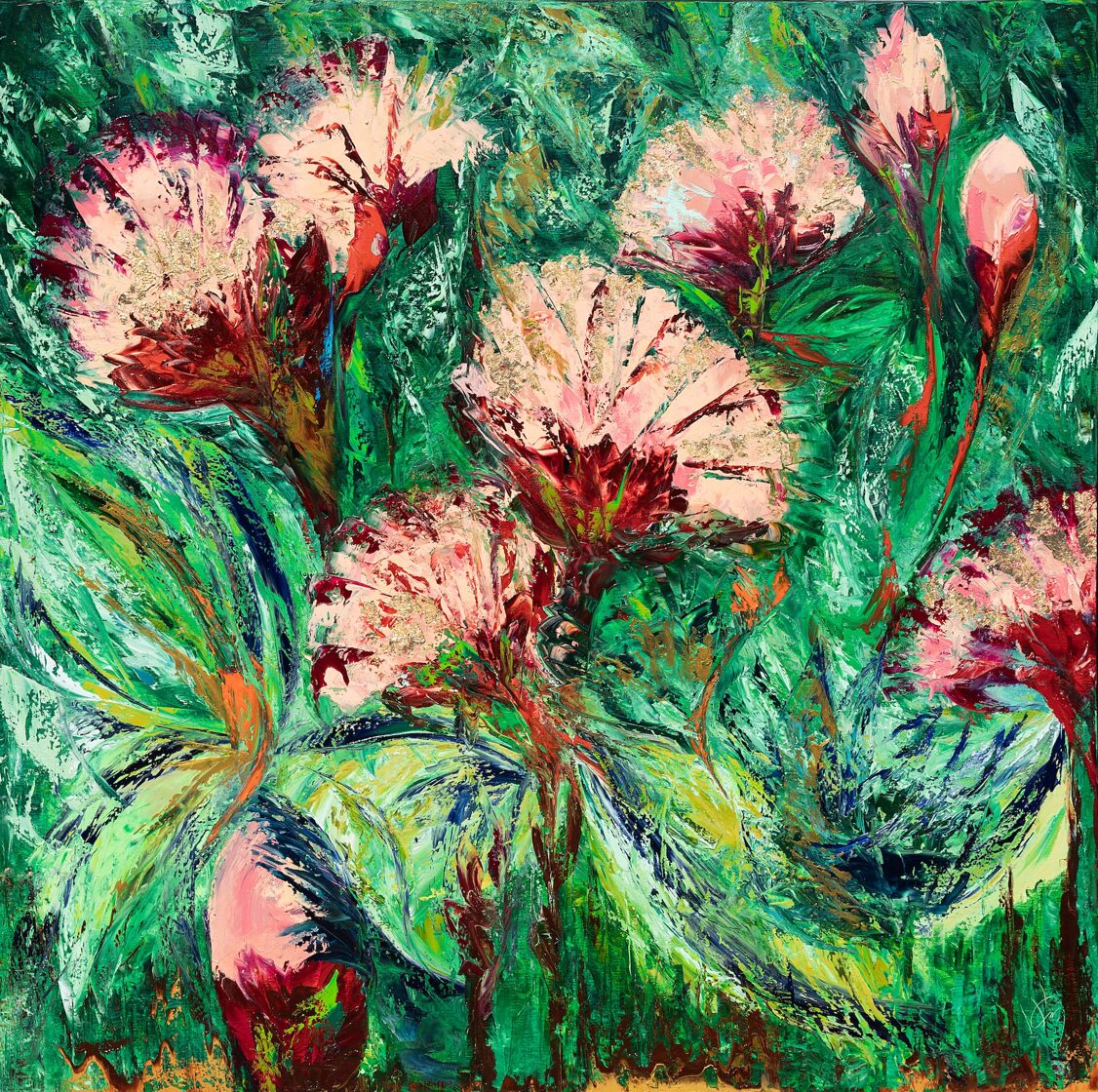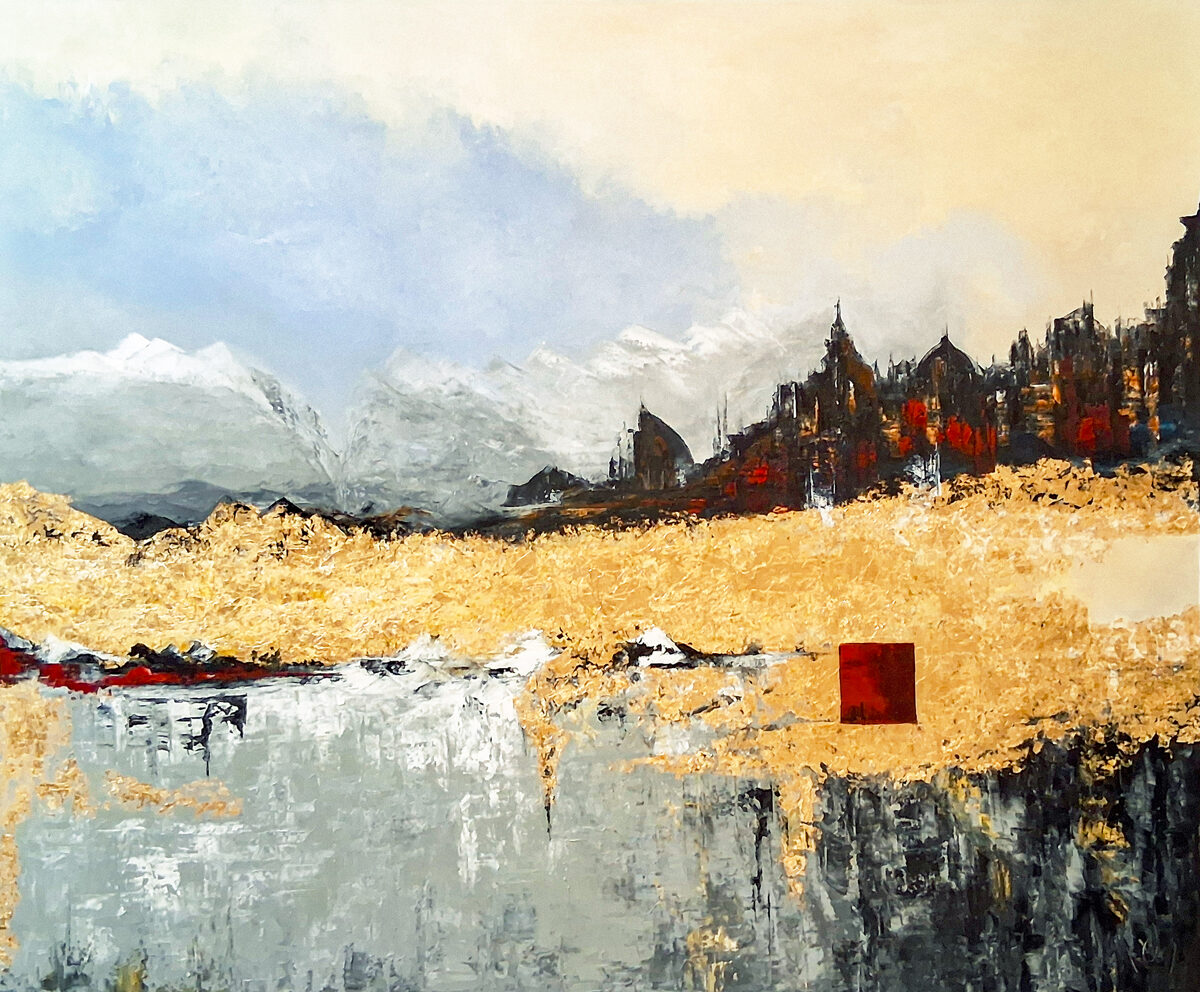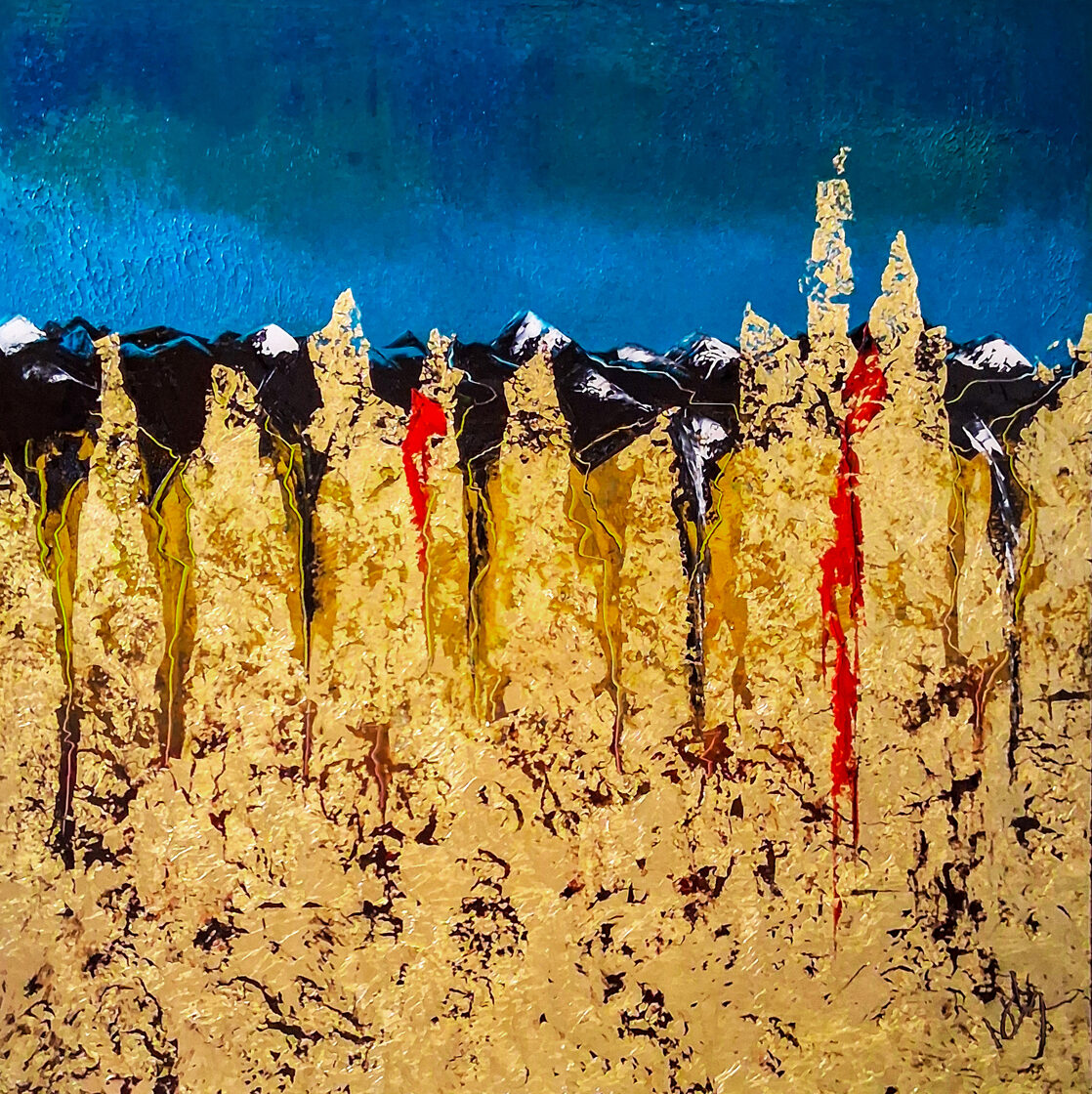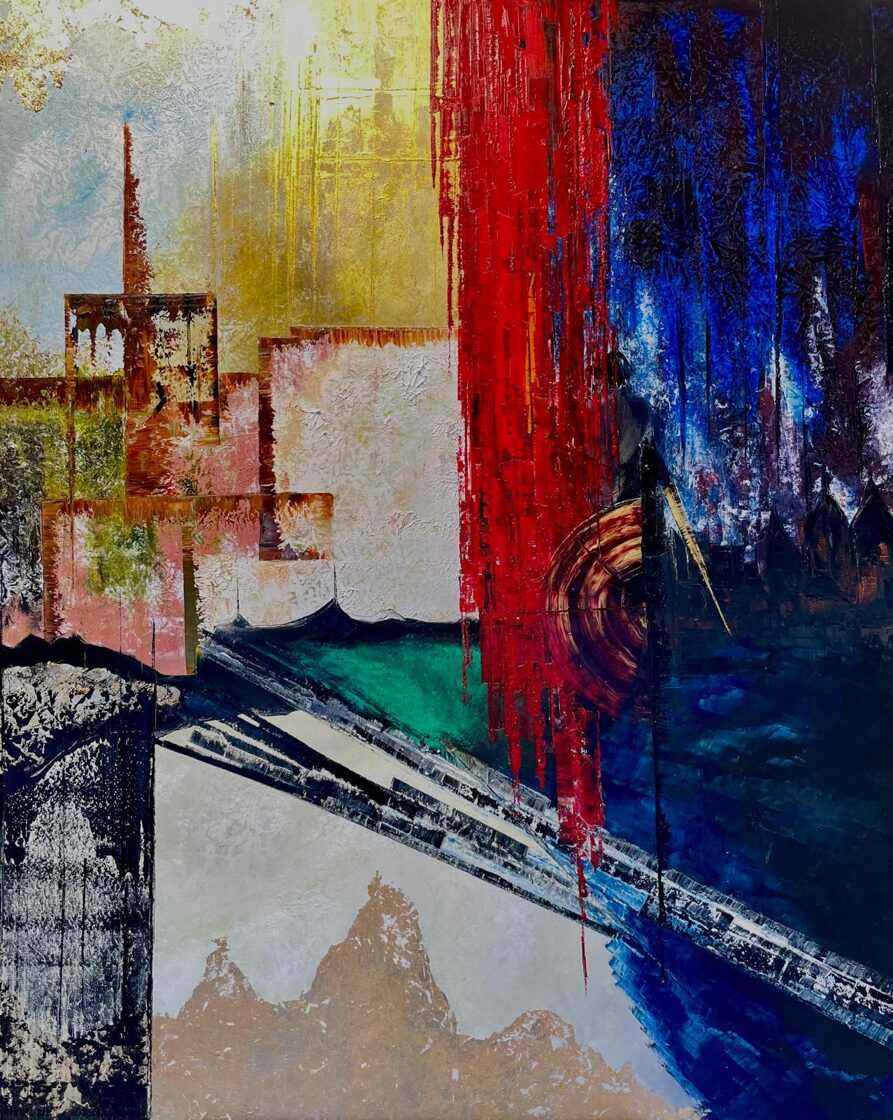The Voice of Time
- 92 cm
- Oil-gold-canvas
- 2025, Sitges/Barcelona
- The artwork is part of the "'Imperator Ultimus' Alexander the Great – Mystery and Reality" cycle
- AVAILABLE FOR PURCHASE
Request price
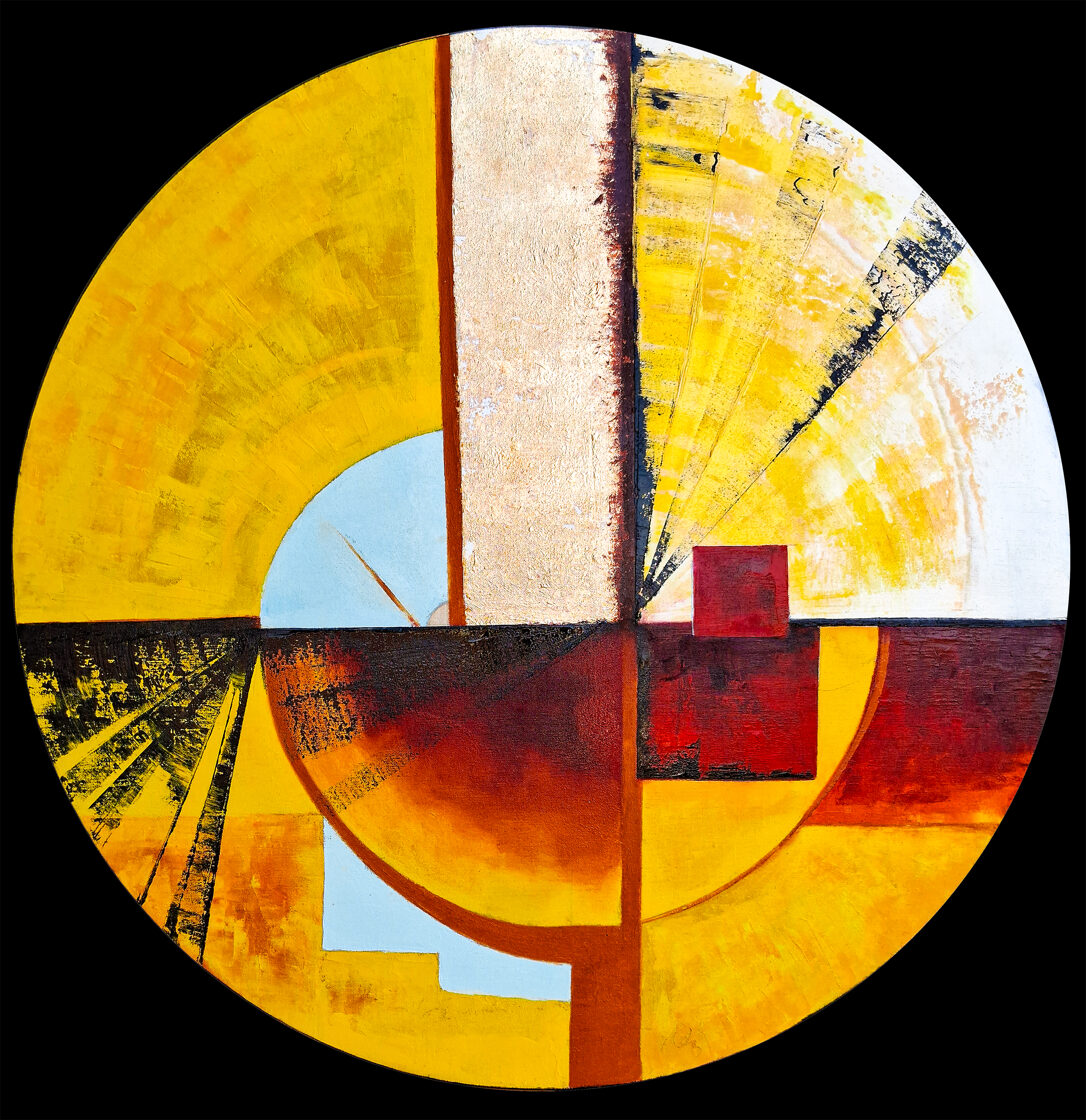
At first glance, the canvas evokes the dazzling light of the sun disk, from which a golden column rises, like a divine revelation on the scorched field of battle.
The circular shape embodies eternity, the straight lines intersecting the upper plane in a wedge shape remind us of the infinite cycle of time, in which the decision of the moment seals destinies.
In the composition, the yellow radiance, creating the illusion of scorching heat, engulfs everything, while the column standing in the center – the axis clad in gold – rises as a sign of the transcendent, blinding the opponent, but showing the way to the one who dares to hear the Voice of Time.
The reds and blacks dominating the lower region carry the blood of battles and cruel destruction, while the geometric spatial elements and angular forms refer to the cold, calculated existence of Darius’s empire. The blue, sharp, living elements, on the other hand, open up a sense of free spaciousness: the promise of the sky, the eternity of triumph, are brought into the composition, as if divine providence itself had created space for Alexander’s victory.
The painting does not depict the spectacle of struggle, but that mysterious moment when, in the course of history, Time speaks: dazzlingly, mercilessly, and unmistakably.
This round canvas is the icon of time: an eternal reminder that the moment of victory is not sealed by man, but by the Voice of Time.


